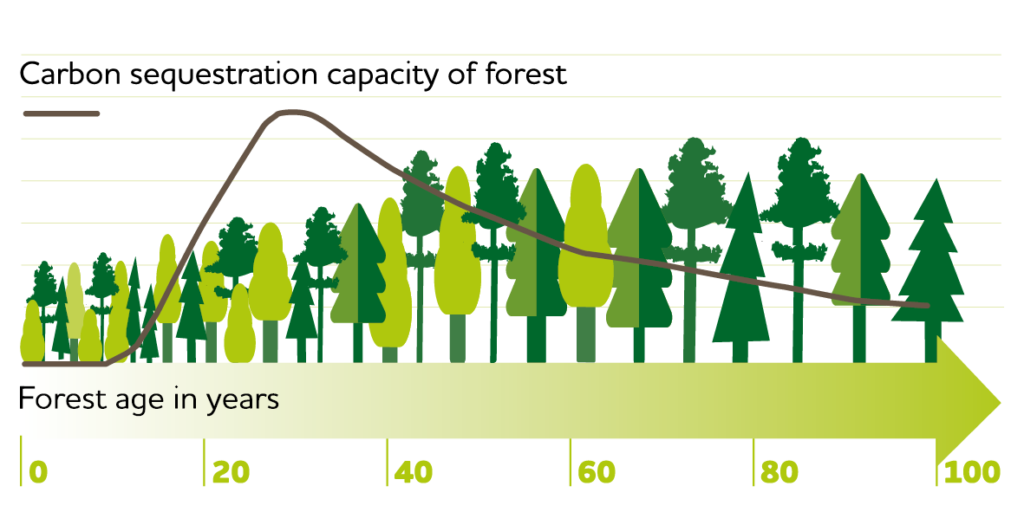Well-targeted felling and management measures that are carried out at the right time ensure that forests can continue to sequester significant amounts of carbon dioxide from year to year. This avoids a decline in growth in aging forests, as well as avoiding an increase in mortality in overly dense forests.
It is important to choose the most appropriate method when reforesting. The most suitable reforesting method is selected for each particular growing site. Small-scale clearcutting in continuous-cover silviculture is targeted at areas where regeneration would otherwise be difficult. Natural renewal can only occur where the appropriate conditions are in place. Artificial regeneration (sowing or planting) guarantees the rapid growth of seedling stands. After forest regeneration, tending of seedling stands will be carried out in due course, before coppices begin to interfere with the growth of commercially valuable timber-trees.
Without felling and management measures, forests will in the long run find their own equilibrium, releasing as much carbon dioxide as they sequester each year due to mortality and decomposition. It is therefore important to direct the vegetative power of the soil to the available growing stock and to harvest the timber in a timely manner. Is it active operators who reap the most rewards from forest management.
